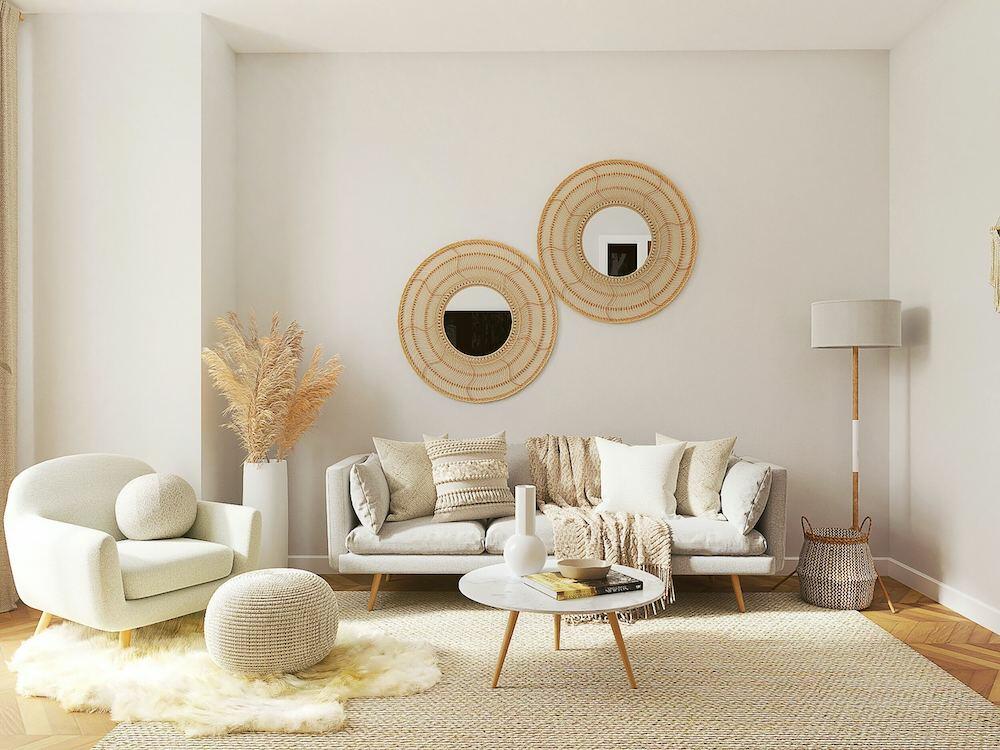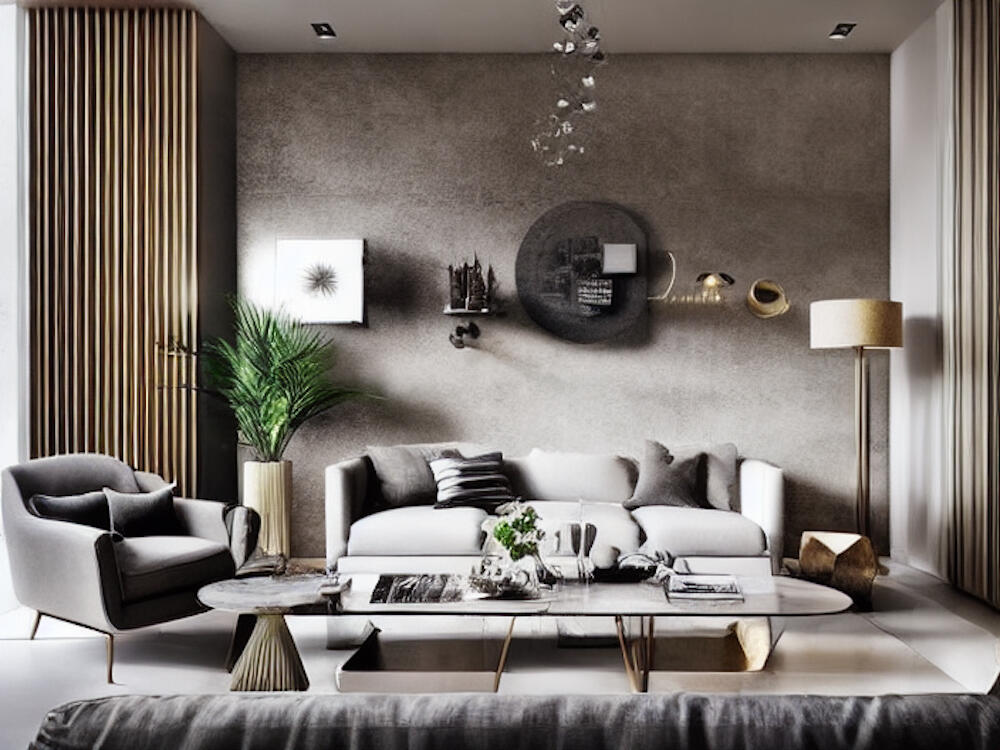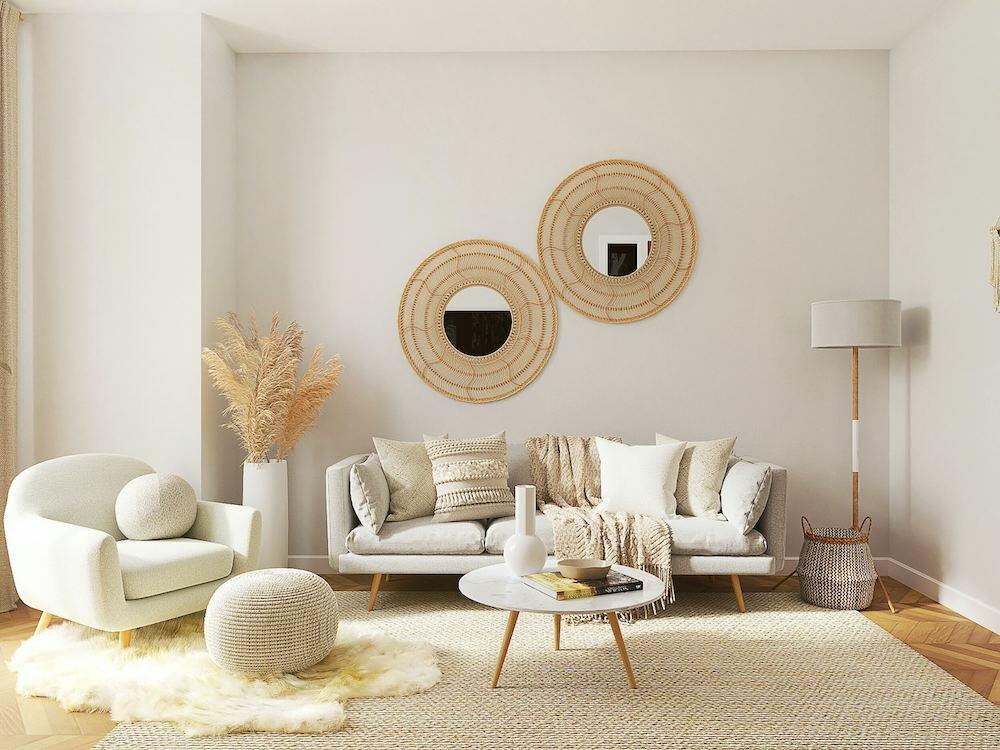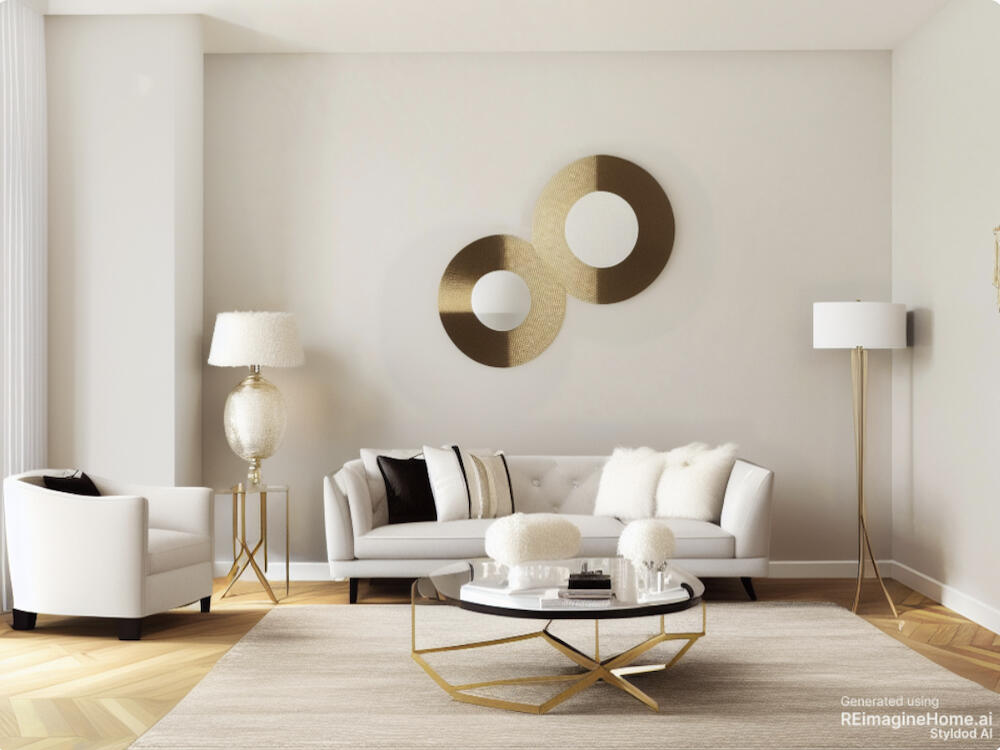Right now, somewhere in a far-flung data center, a computer is describing a room. Using cutting-edge machine learning techniques, algorithmic wizardry and computer vision, it is poring over the contents of a modern farmhouse kitchen and cataloging its elements: table, chair, subway tile.
The process is part of an artificial intelligence training program devised by a startup called Reimagine Home. Their hope is that by teaching AI to understand the contents of a room in natural language, it will get better at understanding what humans really mean when they say, “I want a modern farmhouse kitchen.”
Trippy, right? But these are trippy times. Last year, as artificial intelligence engines like GPT-3 and Stable Diffusion made their way out of research labs and into general circulation, it kicked off a mad dash to turn them into consumer products. Some, like the AI-powered selfie tweaker Lensa, became viral hits on social media. Others generate marketing copy or fight parking tickets. Naturally, some do interior design.
The first such platform to gain public attention was Interior AI, which debuted last October. At the time, its designer, developer Pieter Levels, told Business of Home that his creation was only the beginning: “[Image-generating AI models] like Stable Diffusion and Dall-E are just a few weeks or months old. So it’s very early. I imagine many more products soon.”
Levels was right. A miniboom of AI-powered interior design apps is already underway. Some, like Reimagine Home and CollovGPT, sprung out of existing companies; others, like RoomGPT were built by independent developers. Some are serious-minded endeavors for founders who are all in, while others are savvy side projects for entrepreneurs who are still working a day job.
THE OPPORTUNITY
Whatever the scale and ambition, there’s no doubt that these apps have an audience: Users are flocking to AI design sites. Three million people have visited RoomGPT’s site, says founder Hassan El Mghari, while Reimagine Home has hundreds of thousands of active users despite launching less than three months ago, according to founder Akhilesh Majumdar. Collov spokesperson Markk Tong says the company’s AI design chatbot is so popular that they’ve temporarily shut it down for fear of overwhelming the site.
A lot of that attention is driven by viral social media posts and the cultural hype around artificial intelligence—much of which will likely die down, leaving these platforms with the impetus to prove their longevity with consumers. But professional audiences are tuning in as well. All of the founders of these startups have seen real estate agents, who consistently need to virtually stage listings, flocking to their sites. Furniture retailers seeking ways to insert their product into AI-generated images are curious too: RoomGPT founder Hassan El Mghari says that a handful of brands have already inquired about collaborating.
Interior designers are using these sites in intriguing ways too. “I’ve had dozens of designers reach out to me,” says El Mghari. “Some of them have a lot of demand, and they have to decide which potential clients they’re going to spend time on. But now, they can make a quick mockup with RoomGPT, ask if the client is interested and start to engage and understand how serious they are.”
There’s money to be made in this space. Currently, most AI design platforms offer a few free mock-ups to new users, then charge a few dollars for a subscription or credits, which can add up to tens of thousands of dollars over time. Looming beyond that is the potential investment from the hordes of venture capitalists who have abandoned crypto and are now all-in on AI. One VC offered El Mghari $1 million at a $5 million valuation—a heady return on investment, given the fact that he built RoomGPT in his spare time.
To founders, the promise of an AI-powered “killer app” (a tech industry term for a tool that’s so powerful, it becomes ubiquitous) holds almost unlimited upside. “What I feel is the biggest potential impact is to empower the common guy, who thinks he’s a great designer but isn’t. I used to be exactly like that—it’s a waste of human effort and capital,” says Majumdar. “If we can give that guy a tool that’s brainless and doesn’t cost $2,000 but maybe $200, then that is a huge monetizable market.”


THE FEATURES
So what exactly can these programs do? Each has its own unique twist, but the basics are simple: Users upload an image of a room, input a few prompts (“modern living room,” “minimalist kitchen,” etc.), and the algorithm generates a design rendering. An early version of that concept launched last October with Interior AI, but the technology is advancing rapidly.
For one, AI is already a lot better at contracting. The debut version of Interior AI was prone to rearranging a room’s architecture—windows, doors, ceiling heights and more—to achieve a desired look, leaving users with a stylistically accurate but nonfunctional image.
“[The earliest apps] just weren’t very good,” says El Mghari. “They yielded terrible results, the generated room didn’t even look like the original room.” Since then, the debut of a protocol called ControlNet has allowed developers to put a kind of “leash” on how Stable Diffusion—one of the most popular image-generating AI engines—works. Now, AI design tools like El Mghari’s RoomGPT are pretty good at sticking to the original parameters of the space.
Majumdar’s Reimagine Home takes that control a step further by automatically detecting the furniture within a space and replacing specific pieces rather than reinventing the whole room. “You need precise control for it to be useful,” says Majumdar, pointing out that most users want to keep at least some of their existing decor.
CollovGPT is perhaps the most ambitious of the AI-powered design tools currently on the market. Like the others, it can detect the basic contours of a room and redesign it in a variety of styles. However, its developers have rolled out a variety of bells and whistles. For one, there’s product detection: a tool that seeks to identify items in an AI-generated room and generate links to real-world look-alikes.
For another, there’s the chatbot, which aims to marry ChatGPT to the design process. In a demo for BOH, the bot was able to generate a “modern living room” convincingly and respond to basic requests like “remove the sofa” or “make the walls red” with relative accuracy. It was far from perfect—CollovGPT couldn’t handle more nuanced requests, and it was prone to weird mistakes (for example, it made not only the walls of the room red, but the art and the sofa too). But the feature offered an intriguing glimpse into a future in which users can workshop design challenges with AI in real time.


THE BUGS
AI-powered design apps put cutting-edge technology to practical use—they feel like incredible technological leaps. They’re also riddled with bugs and limitations.
Some of these programs’ weaknesses are unrelated to artificial intelligence. None are much older than a few months, and their sites are often rife with everyday glitches: Pages don’t load, images don’t download, interfaces are clunky. This is very much beta software, built on the fly, and it often shows.
The AI component of these sites has plenty of limitations as well. In general, the more ambitious the concept, the more room for error. For example, CollovGPT’s “product identification” tool is a great idea in theory: AI generates a chandelier, you click on it and get a shoppable link to a look-alike. But in practice, the tool doesn’t really work. It struggles to clearly identify a given product—it’s prone to thinking sofas are chairs, for example—let alone recommend a good look-alike. (Tong, the Collov spokesperson, acknowledges the tool’s limitations, saying that, like all AI technology, it’s a work in progress: “We’re definitely moving towards a better version in the coming months.”)
All of these apps also suffer from a lack of differentiation. Though each has their own spin, they’re all drawing on the same AI engines to power their creations, which lead to a certain level of sameness. “We all do the same thing, we all use ControlNet,” says El Mghari. “There’s an element of just waiting for [new AI technology] to come out.”
Collov is working to overcome that issue by hosting a “design hackathon,” inviting users to upload design images and tag them by style—ostensibly, it’s a contest with a $1,000 prize, but the purpose of the initiative is clearly to train the company’s AI. El Mghari is working on better tools for designers. Meanwhile, Reimagine Home is working to customize its model, hence the experiment of getting an AI to write descriptions of rooms.
Over time, developers are hopeful that initiatives like these will allow their creations to break away from the pack. “AI is a foundational technology, it’s something you build on top of,” says Majumdar, drawing an analogy to the way core technologies like an operating system, or even a battery, serve as the foundation for an entire ecosystem of specialized products. “The hard work that is required to truly understand what the customer needs and solve for that … that’s a huge opportunity.”
However, despite his enthusiasm for the possibilities, Majumdar is candid about the challenges too. The race to build an AI-powered design engine is heating up, but the finish line is nowhere near in sight. “Right now it’s a fantastic toy,” he says. “But there is still a chasm that needs to be crossed before it can become truly helpful.
Homepage photo: Generated by Midjourney



























